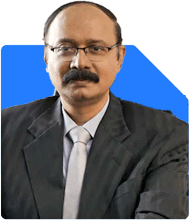43 year old Govt employee with 2 kids, 80k income & 8 lac loan, how to retire with 1 crore at 55?
Ramalingam Kalirajan |10881 Answers |Ask -Follow
Mutual Funds, Financial Planning Expert - Answered on Jul 31, 2024
He has an MBA in finance from the University of Madras and is a certified financial planner.
He is the director and chief financial planner at Holistic Investment, a Chennai-based firm that offers financial planning and wealth management advice.... more

Iam 43 of age ,my net salary 80K (govt Employee), I have 2 son 15 and 10 year of age, I have 8lac personal loan, I want to retire at the age of 55 with 1 cr fund, please suggest fund and amount
Current Financial Situation
Age: 43 years
Net Salary: Rs. 80,000 per month
Personal Loan: Rs. 8 lakhs
Sons: Ages 15 and 10
Financial Goals
Retire at 55
Retirement Fund Target: Rs. 1 crore
Step-by-Step Plan
1. Clear Personal Loan
Focus on Repayment: Allocate a portion of your salary towards clearing the Rs. 8 lakh personal loan. This will free up funds for investment.
Set a Timeline: Aim to clear the loan within the next 2-3 years. This will reduce interest burden.
Investment Strategy
2. Systematic Investment Plans (SIPs)
Disciplined Approach: Invest regularly in mutual funds through SIPs. This will help in averaging the cost and accumulating wealth over time.
Monthly Allocation: Consider allocating Rs. 20,000 per month towards SIPs in diversified mutual funds.
3. Public Provident Fund (PPF)
Tax-Free Returns: PPF offers a safe investment with tax-free returns. It is a good option for long-term savings.
Annual Contribution: Aim to contribute Rs. 1.5 lakhs annually to maximize the benefits.
4. National Pension System (NPS)
Retirement Savings: NPS is designed for retirement savings and offers additional tax benefits.
Monthly Contribution: Allocate Rs. 10,000 per month towards NPS.
Risk Management
5. Insurance Coverage
Health Insurance: Ensure adequate health insurance for you and your family. This will protect against high medical costs.
Term Insurance: Opt for a term insurance plan. This will secure your family’s future in case of an untimely demise.
Education Fund for Sons
6. Children's Education
Dedicated Savings: Start a dedicated savings plan for your sons' education. This will ensure their educational expenses are covered.
Sukanya Samriddhi Yojana: For your younger son, consider investing in child-specific schemes.
Final Insights
Starting early gives you an advantage. Regularly review and adjust your financial plan as your income and goals evolve. Seek guidance from a certified financial planner to tailor a plan specific to your needs.
Best Regards,
K. Ramalingam, MBA, CFP,
Chief Financial Planner,
www.holisticinvestment.in
You may like to see similar questions and answers below
Ramalingam Kalirajan |10881 Answers |Ask -Follow
Mutual Funds, Financial Planning Expert - Answered on Jun 18, 2024
Ramalingam Kalirajan |10881 Answers |Ask -Follow
Mutual Funds, Financial Planning Expert - Answered on Jul 10, 2024
Ramalingam Kalirajan |10881 Answers |Ask -Follow
Mutual Funds, Financial Planning Expert - Answered on Jun 21, 2025
Janak Patel |71 Answers |Ask -Follow
MF, PF Expert - Answered on Jul 15, 2025
Ravi Mittal |677 Answers |Ask -Follow
Dating, Relationships Expert - Answered on Dec 12, 2025
Ramalingam Kalirajan |10881 Answers |Ask -Follow
Mutual Funds, Financial Planning Expert - Answered on Dec 12, 2025
Ramalingam Kalirajan |10881 Answers |Ask -Follow
Mutual Funds, Financial Planning Expert - Answered on Dec 12, 2025
Reetika Sharma |423 Answers |Ask -Follow
Financial Planner, MF and Insurance Expert - Answered on Dec 12, 2025
Reetika Sharma |423 Answers |Ask -Follow
Financial Planner, MF and Insurance Expert - Answered on Dec 12, 2025
Reetika Sharma |423 Answers |Ask -Follow
Financial Planner, MF and Insurance Expert - Answered on Dec 12, 2025
Reetika Sharma |423 Answers |Ask -Follow
Financial Planner, MF and Insurance Expert - Answered on Dec 12, 2025
Reetika Sharma |423 Answers |Ask -Follow
Financial Planner, MF and Insurance Expert - Answered on Dec 12, 2025
Mayank Chandel |2572 Answers |Ask -Follow
IIT-JEE, NEET-UG, SAT, CLAT, CA, CS Exam Expert - Answered on Dec 11, 2025
Mayank Chandel |2572 Answers |Ask -Follow
IIT-JEE, NEET-UG, SAT, CLAT, CA, CS Exam Expert - Answered on Dec 11, 2025























